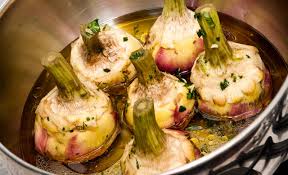Vatican City, an independent city-state enclaved within Rome, Italy, serves as the spiritual and administrative center of the Roman Catholic Church. Covering an area of just 44 hectares (about 110 acres), it is the smallest independent state in the world. Home to the Pope, Vatican City is renowned for its religious significance, artistic treasures, and historical landmarks, making it a unique destination for travelers and pilgrims alike.
Table of Contents
Geography
Vatican City is located entirely within the city of Rome, bordered by a 2-mile long wall. It is situated on the west bank of the Tiber River and is surrounded by various neighborhoods of Rome, making it easily accessible for visitors. Despite its small size, Vatican City features a rich topography, including beautiful gardens, courtyards, and stunning architecture.
The city-state is well-known for its iconic St. Peter’s Basilica, which dominates the skyline with its grand dome. The Vatican Gardens, covering approximately half of the territory, offer a serene environment filled with lush greenery and ornate fountains. Despite its compact size, Vatican City’s unique geographical position allows it to serve as a significant cultural and religious center for millions around the world.
Vatican City is a sovereign city-state and does not have states like larger countries. It is the smallest independent state in the world, both in terms of area and population, and functions as a single entity governed by the Pope.
History
The history of Vatican City is deeply intertwined with the development of the Catholic Church. The origins can be traced back to the early Christian era when Saint Peter, one of Jesus Christ’s apostles and the first Pope, was martyred and buried in Rome. The site of his burial later became the location of St. Peter’s Basilica, a major pilgrimage destination.
In the 4th century, Emperor Constantine I built the original basilica over Saint Peter’s tomb, solidifying the site’s importance. The Vatican gradually became the residence of the Popes and the administrative center of the Church. Throughout the Middle Ages, the Papacy gained significant political power, and the Vatican’s influence expanded.
In 1309, the Papacy temporarily relocated to Avignon, France, leading to a period of instability. The Popes returned to Rome in 1377, and the Vatican was transformed into a sovereign territory. The Renaissance marked a flourishing period for the Vatican, as Popes commissioned remarkable works of art and architecture, including Michelangelo’s Sistine Chapel ceiling.
In 1870, the Kingdom of Italy annexed Rome, leading to the loss of papal territories and reducing the Pope’s political power. This prompted the Pope to declare himself a prisoner in the Vatican. The Lateran Treaty of 1929 between the Holy See and Italy established Vatican City as an independent state, granting the Pope full sovereignty.
Top Ten Most Famous Places to Visit in Vatican City
St. Peter’s Basilica

St. Peter’s Basilica is one of the most iconic churches in the world and a masterpiece of Renaissance architecture. It is renowned for its stunning dome, designed by Michelangelo, and its magnificent interior, featuring works by artists such as Bernini and Raphael. Visitors can climb to the top of the dome for breathtaking views of the Vatican and Rome.
The Vatican Museums

The Vatican Museums house an extensive collection of art and historical artifacts amassed by the Popes over centuries. The museums are home to the famous Sistine Chapel, adorned with Michelangelo’s stunning frescoes, including “The Last Judgment.” The collections include ancient sculptures, Renaissance paintings, and priceless tapestries.
The Sistine Chapel

The Sistine Chapel is renowned for its magnificent ceiling painted by Michelangelo, depicting scenes from the Book of Genesis, including the iconic “Creation of Adam.” The chapel is also the site of the papal conclave, where a new Pope is elected. Visitors can admire the intricate details of the frescoes and the overall grandeur of the chapel.
St. Peter’s Square

St. Peter’s Square is an architectural marvel designed by Gian Lorenzo Bernini, featuring a grand colonnade that creates a sense of openness and welcome. The square is often filled with pilgrims and tourists who come to witness papal ceremonies and events. The iconic Egyptian obelisk in the center adds to the square’s historical significance.
The Apostolic Palace

The Apostolic Palace serves as the official residence of the Pope and contains numerous private apartments, chapels, and the Vatican Museums. Visitors can admire the ornate architecture and artwork within the palace, as well as the Vatican Gardens, which provide a serene escape from the bustling city.
The Vatican Gardens

The Vatican Gardens cover approximately half of Vatican City’s territory and offer a peaceful retreat filled with lush greenery, fountains, and sculptures. Access to the gardens is typically guided, allowing visitors to explore the beautifully landscaped areas and enjoy stunning views of St. Peter’s Basilica.
The Niccoline Chapel

The Niccoline Chapel, located within the Vatican Museums, is known for its exquisite frescoes painted by the artist Fra Angelico. The chapel is dedicated to Pope Nicholas V and features vibrant scenes that depict the lives of saints. It is a lesser-known gem within the Vatican, attracting art enthusiasts and historians.
The Vatican Library

The Vatican Library is one of the oldest libraries in the world, housing an extensive collection of manuscripts, books, and historical documents. It is a treasure trove for scholars and researchers, containing invaluable texts dating back to ancient times. The library is not open to the public, but guided tours provide insights into its rich history.
The Tomb of Saint Peter

The Tomb of Saint Peter, located beneath St. Peter’s Basilica, is believed to be the burial site of Saint Peter himself. The tomb is a significant pilgrimage site for Catholics, and visitors can view the ancient necropolis and the beautifully adorned tomb. This historical connection adds to the spiritual significance of the basilica.
The Chair of St. Peter

The Chair of St. Peter, housed in the apse of St. Peter’s Basilica, is an ornate throne symbolizing the authority of the Pope. The chair is encased in a stunning bronze structure designed by Bernini, adorned with intricate details. It serves as a powerful representation of the papal office and its connection to the early Christian Church.
Culture
The official language of Vatican City is Italian, although Latin is also used in official documents and liturgical practices. Due to its status as a spiritual center, many languages are spoken within Vatican City, including Spanish, French, English, and German, reflecting the international nature of the Catholic Church and its diverse congregation.
The lifestyle in Vatican City is influenced by its religious significance and the presence of the Papacy. The population consists mainly of clergy, including cardinals, bishops, and priests, as well as members of the Swiss Guard. Daily life revolves around religious activities, including Mass, prayer, and pastoral work.
The Vatican emphasizes a lifestyle of simplicity, humility, and service, reflecting the teachings of Jesus Christ. The community is dedicated to the mission of the Church, focusing on spiritual growth, education, and outreach to the global Catholic community.
Vatican City is steeped in traditions and customs that reflect its religious heritage. Major liturgical celebrations, such as Christmas and Easter, draw thousands of pilgrims to St. Peter’s Basilica for special Masses led by the Pope. The Feast of St. Peter and St. Paul is another significant celebration, honoring the two apostles.
Papal audiences held in St. Peter’s Square provide an opportunity for the faithful to receive blessings from the Pope. Additionally, the Vatican maintains various customs related to the Catholic Church’s teachings, including the observance of fasting and prayer during Lent.
Festivals
Vatican City celebrates a range of religious festivals throughout the year, attracting pilgrims and tourists from around the world. One of the most significant events is Easter, marked by the Pope’s Easter Vigil and the Urbi et Orbi blessing on Easter Sunday. The Christmas season is also celebrated with special Masses and events, including the lighting of the Christmas tree in St. Peter’s Square.
Other notable festivals include the Feast of the Assumption, the Feast of the Immaculate Conception, and the Feast of St. Peter and St. Paul. These celebrations highlight the spiritual significance of the Vatican and provide opportunities for communal worship and reflection.
Economy
Vatican City’s economy is unique, primarily supported by the Catholic Church and its global activities. The Vatican generates revenue through donations, the sale of postage stamps, publications, and ticket sales to the Vatican Museums. The Holy See also receives funds from investments and financial assets.
Despite its small size, Vatican City’s economy plays a vital role in supporting the Church’s activities worldwide, including humanitarian efforts, education, and outreach programs. The Vatican emphasizes transparency and accountability in its financial practices to maintain trust and support from its global congregation.
Tourism
Tourism is a significant aspect of Vatican City’s economy, with millions of visitors arriving each year to explore its rich history and cultural treasures. The Vatican Museums, St. Peter’s Basilica, and the Sistine Chapel are among the most popular attractions, drawing pilgrims and tourists alike.
The Vatican actively promotes tourism through guided tours, events, and exhibitions, enhancing the visitor experience. As a result, Vatican City remains a major pilgrimage destination for Catholics and a cultural hub for those interested in art, history, and spirituality.
Top Eight Most Famous Food








Interesting Facts About Vatican City
- Vatican City is the smallest independent state in the world, covering just 44 hectares.
- The Pope is the head of state and the spiritual leader of the Roman Catholic Church.
- The Vatican has its own postal service, and Vatican stamps are popular among collectors.
- The Swiss Guard, responsible for the Pope’s safety, has been protecting the Vatican since 1506.
- Vatican City has no official currency but uses the Euro for transactions.
- The Vatican Museums are home to over 70,000 works of art, including masterpieces by Michelangelo and Raphael.
- The Sistine Chapel ceiling, painted by Michelangelo, took four years to complete (1508-1512).
- Vatican City has its own newspaper, L’Osservatore Romano, which has been published since 1861.
- The Pope’s annual address on World Peace Day is a significant event that attracts global attention.
- Vatican City has no permanent residents, but a few hundred people live there, primarily clergy and members of the Swiss Guard.
Future Perspective
As the spiritual heart of the Catholic Church, Vatican City continues to play a crucial role in promoting dialogue, peace, and social justice worldwide. The Vatican aims to adapt to modern challenges, including the need for greater transparency and engagement with the global community. Through initiatives focusing on climate change, interfaith dialogue, and humanitarian efforts, the Vatican seeks to remain relevant and influential in addressing contemporary issues.
Conclusion
Vatican City is a remarkable city-state that embodies the spiritual and cultural heritage of the Roman Catholic Church. With its iconic landmarks, rich history, and vibrant traditions, it offers a unique experience for visitors seeking to explore its profound significance. As a center of faith, art, and diplomacy, Vatican City continues to inspire and attract people from around the world, ensuring its place as a timeless and revered destination.

